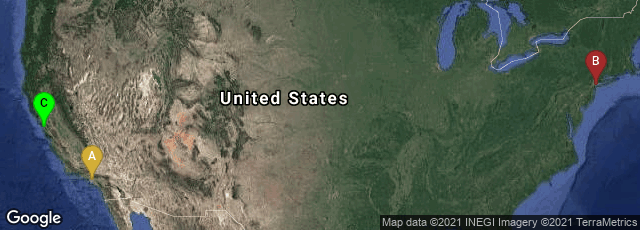
A: Los Angeles, California, United States, B: Brooklyn, New York, United States, C: San Francisco, California, United States
On December 4, 2013 The Getty Conservation Institute (GCI) and World Monuments Fund (WMF) and Farallon Geographics announced the public release of Arches 1.0—an open-source, web-based geospatial information system (GIS) for cultural heritage inventory and management, built specifically to help heritage organizations safeguard cultural heritage sites worldwide.
"By incorporating a broad range of international standards, Arches meets a critical need in terms of gathering, making accessible and preserving key information about cultural heritage. “Knowing what you have is the critical first step in the conservation process. Inventorying heritage assets is a major task and a major investment,” said Bonnie Burnham, President and CEO of World Monuments Fund.
"Cultural heritage inventories are difficult to establish and maintain. Agencies often rely on costly proprietary software that is frequently a mismatch for the needs of the heritage field or they create custom information systems from scratch. Both approaches remain problematic and many national and local authorities around the world are struggling to find resources to address these challenges. The GCI and WMF have responded to this need by partnering to create Arches, which is available at no cost. Arches can present its user interface in any language or in multiple languages, and is configurable to any geographic location or region. It is web-based to provide for the widest access and requires minimal training.
"The system is freely available for download from the Internet so that institutions may install it at any location in the world. “Our hope is that by creating Arches we can help reduce the need for heritage institutions to expend scarce resources on creating systems from the ground up, and also alleviate the need for them to engage in the complexities and constantly changing world of software development,” said Tim Whalen, Director of the Getty Conservation Institute in Los Angeles. In developing Arches, the GCI and WMF consulted international best practices and standards, engaging nearly 20 national, regional, and local government heritage authorities from the US, England, Belgium, France, and the Middle East, as well as information technology experts from the US and Europe. The contributions of English Heritage and the Flanders Heritage Agency have played a particularly important role during the development process. Data provided by English Heritage has been valuable for system development, and it is incorporated as a sample data set within the demonstration version of Arches.
"The careful integration of standards in Arches also will encourage the creation and management of data using best practices. This makes the exchange and comparison of data between Arches and other information systems easier, both within the heritage community and related fields, and it will ultimately support the longevity of important information related to cultural sites. Once the Arches system is installed, institutions implementing it can control the degree of visibility of their data. They may choose to have the system and its data totally open to online access, partially open, accessible with a log-in, not accessible at all, or somewhere in between" (http://artdaily.com/news/66701/Getty-and-World-Monuments-Fund-release-Arches-Software-to-help-safeguard-cultural-heritage-sites-#.UqM80_SIBcY, accessed 12-07-2013).